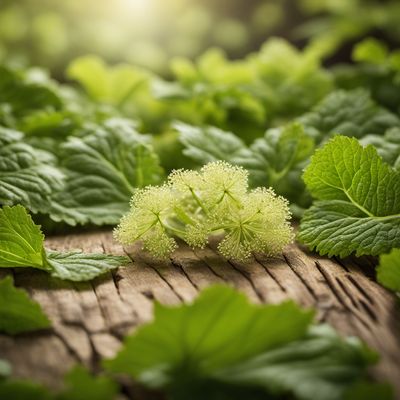
Ingredient
Eyebright infusion leaves
The Visionary Herb: Exploring the Benefits of Eyebright Infusion Leaves
Eyebright infusion leaves are characterized by their small, delicate leaves that have a vibrant green color. They possess a mild, slightly bitter taste with subtle floral notes. When brewed into an infusion, they release a refreshing aroma and a light golden hue. Eyebright infusion leaves are often used in herbal teas, tinctures, and topical preparations.
Origins and history
Eyebright has a long history of use in traditional medicine, particularly in European herbalism. It was believed to have properties that support eye health and relieve various eye-related conditions. Eyebright infusion leaves were used in remedies for conjunctivitis, eye strain, and allergies. Today, eyebright is still valued for its potential benefits and is often included in natural eye care products and herbal preparations.
Nutritional information
Eyebright infusion leaves are a good source of antioxidants, vitamins, and minerals. They are low in calories and contain compounds that may have anti-inflammatory and antimicrobial properties. However, it is important to note that more research is needed to fully understand the potential health benefits of eyebright infusion leaves.
Allergens
None known.
How to select
When selecting eyebright infusion leaves, look for dried leaves that are whole, intact, and have a vibrant green color. Avoid leaves that appear discolored, crushed, or have a stale smell. Opt for organic or sustainably sourced leaves whenever possible to ensure the highest quality and purity.
Storage recommendations
To maintain the freshness and potency of eyebright infusion leaves, store them in an airtight container in a cool, dry place away from direct sunlight. Avoid exposure to moisture or strong odors, as this can affect the quality of the leaves. Proper storage will help preserve their flavor and medicinal properties.
How to produce
Eyebright infusion leaves can be grown in a home garden or purchased from specialty herb suppliers. They thrive in well-drained soil and prefer partial shade. To grow eyebright, sow the seeds in early spring or late summer, and keep the soil moist until germination. Once established, the plants require minimal care and can be harvested by gently plucking the leaves.
Preparation tips
Eyebright infusion leaves can be used to prepare herbal teas by steeping them in hot water for several minutes. The resulting infusion can be enjoyed on its own or combined with other herbs for a customized blend. Eyebright leaves can also be used to make tinctures or infused oils for topical applications. When using eyebright infusion leaves, it is important to follow recommended dosages and consult with a healthcare professional if using for medicinal purposes.
Substitutions
There are no direct substitutions for eyebright infusion leaves due to their unique properties and flavor. However, other herbal teas or infusions that promote eye health, such as chamomile or calendula, can be used as alternatives.
Culinary uses
Eyebright infusion leaves are commonly used in herbal teas and tinctures that are believed to support eye health and relieve eye-related discomfort. They can also be used topically in compresses or eye washes. Additionally, eyebright infusion leaves can be incorporated into homemade skincare products, such as facial toners or creams, for their potential soothing and rejuvenating effects.
Availability
Eyebright infusion leaves are native to Europe and can be found growing in various countries, including the United Kingdom, Germany, and Poland. They are also cultivated in other parts of the world, such as North America and Australia. Eyebright infusion leaves can be purchased from herbalists, health food stores, or online retailers that specialize in herbal products.
More ingredients from this category » Browse all

Clubmoss infusion leaves
The Ancient Elixir: Unveiling the Mysteries of Clubmoss Infusion Leaves

Wild angelica infusion leaves
The Herbal Elixir: Unveiling the Magic of Wild Angelica Infusion Leaves

Chiretta infusion leaves
The Bitter Elixir: Unveiling the Power of Chiretta Infusion Leaves

Elder infusion leaves
The Healing Elixir: Unveiling the Power of Elder Infusion Leaves

Jiaogulan infusion leaves
"The Immortality Herb: Unlocking the Health Benefits of Jiaogulan Infusion Leaves"

Sweet trefoil infusion leaves
The Delicate Herbal Elixir

Gymnema infusion leaves
The Sweet-Suppressing Herb

Smooth rupturewort infusion leaves
The Tranquil Herbal Elixir

Mullein infusion leaves
"Nature's Respiratory Remedy: Exploring the Benefits of Mullein Infusion Leaves"

Muña infusion leaves
Andean Mint Delight

Shepherd’s purse infusion leaves
The Herbal Elixir of the Pastures

Alpine ladies mantle infusion leaves
The Enchanting Elixir: Unveiling the Magic of Alpine Ladies Mantle Infusion Leaves